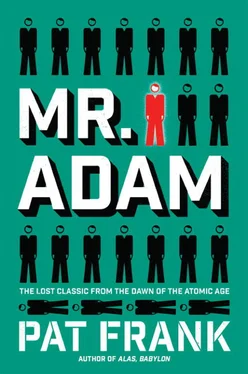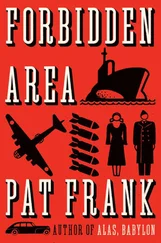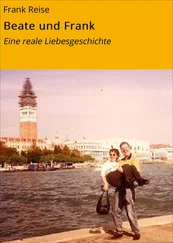I telephoned to Abel Pumphrey, the Director of the National Re-fertilization Project, that I was on the way down. Marge took me to the train and kissed me goodbye as if I were off to Shanghai. The last thing she said was, “You will do your best, won’t you?”
Women are such queer people.
Ididn’t have any illusions about my chore. I knew that at the very best it would be thankless, and probably a perpetual headache, and something which called for a psychiatrist rather than a newspaperman. But I felt a sort of moral responsibility for Mr. Adam. I had been the first to launch him into his career as the last productive male, and it seemed only right that I should help guide his footsteps towards whatever strange destiny awaited him. In addition, I was just plain curious.
I underestimated Washington. I didn’t foresee any of the really frightening events that presently engulfed me. When I look back at it now, I was a toddling child who picks a river in flood as a nice place for wading, and instantly is seized by the current and swept downstream.
For instance, I thought the National Re-fertilization Project would be composed of a dozen or so people, with a committee of physicians like Maria Ostenheimer and Tommy Thompson acting as advisers. It wasn’t like that at all. The N.R.P. was an enormous chunk of government, expanding day by day. The creation of any new government agency is, in many respects, like bringing in a new oil field. With the N.R.P., to which the President had allotted unlimited emergency funds, it was as if gold had been discovered in California all over again.
The day on which I arrived in Washington—December 18—is eaten into my memory by the acid of shock, just as the men who were there will always remember the date of Anzio, or Omaha Beach.
I hadn’t expected anyone to meet me at the station, but when I went through the gates into the concourse a neat young man with a pointed, thin, suspicious nose—the type of nose I always associate with credit managers—stopped me. “You’re Mr. Smith?” he said.
“Uh-huh.”
He held out his hand. “I’m Klutz—Percy Klutz, Deputy Director on the administrative side.” When he smiled his mouth looked like that of a fresh-caught skate. “The Chief sent me down to meet you.”
“That was nice of him,” I said. The Chief would be Abel Pumphrey. I wondered how he had recognized me, and asked. He said the AP Bureau had produced a description, and a photograph. He wondered whether I’d had lunch, and when I told him no, he suggested Harvey’s. Outside the station was a sedan, with a government seal, and N.R.P., stenciled on its door.
We ordered clams and steaks and then Klutz said: “I suppose this is as good a time as any to fill you in on the big picture. We’re really beginning to build an organization, now. Everybody thinks the Chief is the coming man in the Administration. Of course, it has been an uphill fight all the way. First the Interior Department tried to take over, and then the Public Health Service claimed it was their baby. Right now we’re operating under the Executive Office of the President, so we don’t have much budget trouble. The real test will come when we go to Congress for regular annual appropriations. I guess our big break was when we got Adam away from the National Research Council.”
“How is Homer Adam?” I inquired. “I’d like to see him as soon as possible.”
He looked at me, curiously, and then took a pencil from an inside pocket and began drawing a chart on the tablecloth. “Now up at the top, of course,” he went on, ignoring my question, “is the President, and right under the President—” his deft pencil drew a little box and began filling it with names—“is the Inter-Departmental Advisory Committee. They decide top policy.”
“On what?” I asked. “I thought the idea was simply to get Adam in shape, and then start producing babies.”
“Oh, no!” Klutz said, startled. “The production end is only the smallest part of it! That comes way down here—” he indicated the bottom of the tablecloth—“in Operations.”
“Now as you see,” he went on, “the top policy group is composed of the President himself, the Secretaries of State, War, Interior, and Navy—I don’t know why they put in Navy except that they put in War—the Surgeon General, Director of National Research Council—we couldn’t keep him off it—and finally the Chief.”
A strange light came into Klutz’s eyes, and he began to sketch more boxes, connected by lines horizontally and vertically, with lightning precision. “Now right under the top policy group N.R.P. operates. I’m over here to the right of the Chief, and under me I’ve got Administration, Budget, Housing, Communications, and Transportation. I don’t fool around with policy, planning, or operations. I’m just the man who keeps things running.”
Klutz’s pencil raced on. “Branching off this line that runs from the Chief up to top policy we have the liaison officers from the other departments or agencies—we’re having a tough time finding suitable quarters for all of them—and directly under the Chief we have the Planning Board.”
“Planning Board?”
“Certainly! You see, policy flows down to the Chief from the top group, and then down to the Planning Board, which is composed of our own heads of branches and divisions. The Planning Board issues the directives and passes them on down to be implemented. Right off the Planning Board, here, we have the Advisory Committee which is composed of leading physicians and biologists and such from all over the country. They aren’t in government, of course. They’re just to give us backing when we need it.”
Klutz hadn’t touched his clams, and he didn’t seem to notice when the waiter whisked them off the table. “The Deputy Director falls right under the Planning Board, and out from him you have our own liaison officers, who operate on the Planning Level, including the one to Congress, and our own advisory group on international problems which communicates directly with the State Department and sends proposals to the Planning Board. You see how nicely the channels flow.”
“Yes. I see.” I found I was watching like a child fascinated by a sidewalk artist sketching the Battle of Bunker Hill.
“Right under the Deputy Director come the Assistant Directors for the various branches,” Klutz went on. “Research and Analytical. Statistical. Public Relations. And of course, Operations. Then under the branches there come the various divisions, which I’ll just sketch in here in small boxes, because I don’t think they’d interest you just now.”
“And where do I fit in?” I asked.
“Well, you see we’ve already got an Assistant Director for Public Relations—Gableman. Did you ever meet him?”
“No, I don’t think so.”
“He’s a very fine newspaperman,” Klutz said, in some surprise. “I think he started doing publicity for the WPA, and later he shifted to the National Youth Administration. I think he also wrote for NRA. Anyway, he was one of the young writers for the Office of Facts and Figures, and then he graduated to the OWI. He went to the State Department from the OWI, and we got him from them. Very fine newspaperman. Very experienced. He’s building up an excellent branch. I’m giving them a building of their own very shortly.”
“And me?”
“Well, frankly, you’re rather a problem. You see we already have an Assistant Director for Public Relations, so we’ll make you Special Assistant to the Director, and put you in here.” He drew a line away from the line that connected Pumphrey to the Planning Board, and put a little box at the end of it, and wrote “Smith” inside the box. “I don’t know whether you’ll operate on the policy, or the planning, or the operations level,” Klutz explained, “so in any case that will take care of it.”
Читать дальше












